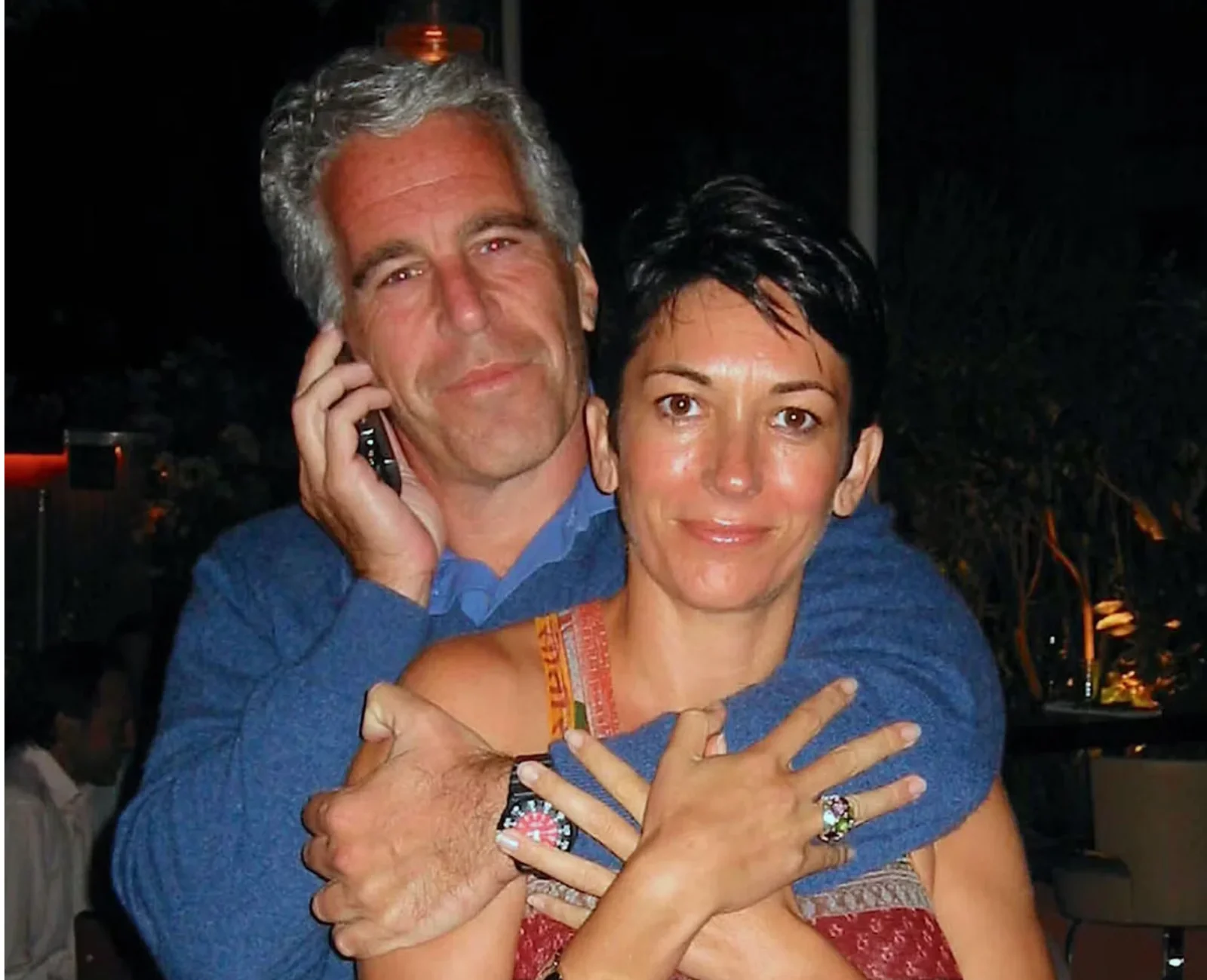World News
Why Israel and Ukraine are forcing a 2024 reckoning in both parties on December 1, 2023 at 10:30 am

This article is the second in The Hill’s three-part “World at War” series this week, which also explores public sentiment around the Russia-Ukraine war and simmering tensions with China.
A broad coalition of progressives and minority voters furious about Israel’s war in Gaza have thrust the Democratic party into a bitter fight — spurring an internal clash with echoes of the GOP’s growing divide over Ukraine.
While voters remain largely focused on domestic issues and the economy, both wars have forced 2024 candidates to publicly navigate vexing questions about U.S. foreign policy and military posture, with potential consequences to their support.
President Biden and former President Trump, the most likely 2024 nominees in their respective parties, must now contend with these global conflicts in their own vision for America’s role in the world.
“Trump and Biden are trying to replace the old Cold War mentality with a new one,” said Michael Genovese, who heads the Global Policy Institute at Loyola Marymount University. “Trump’s was America first, that was kind of an isolation glove, and Biden’s is democracy — and that hasn’t developed legs among voters.”
While the two presidents are largely aligned in backing Israel’s retaliatory war against Hamas over the Oct. 7 terrorist attacks, they are deeply split on Ukraine in its war against Russia’s invading forces.
Genovese said the U.S. is still struggling to find its foreign policy direction after the cold war. And he said the debate playing out over Gaza and Ukraine today could have a major impact on long-term U.S. national security — especially when the U.S. has designated China as its biggest threat.
“Today, we’re all over the map and we have no coherent foreign policy,” he said. “That can open the door for others — fill in the blank with China — to exploit that.”
While Ukraine has seen a slow buildup of GOP resistance, the Israel-Hamas war is quickly escalating tensions among Democrats.
A broad section of younger Democrats, progressives, Arab Americans and other minority groups say there is a double standard between supporting Ukraine against Russia and backing Israel in a destructive campaign to destroy Hamas.
“Americans have become highly polarized on Israel,” said Shibley Telhami, a nonresident senior fellow at the Center for Middle East Policy at the Brookings Institution. “Palestine used to be one of the issues that escaped polarization in America. But it no longer is.”
Telhami said the divisions are growing wide enough to endanger Biden’s support in his own party — even among constituents united against Trump, his likely Republican opponent in 2024.
“This is what I call an image-shaping problem. People are making an assessment. Who is Joe Biden, and is Joe Biden someone we trust? Is Joe Biden someone we want to lead?” he said. “That’s a big question. And I think [the war] has reshaped people’s views of Biden.”
Biden faced an internal revolt, in which more than 500 government employees across the administration signed a letter protesting the president’s policy on the war.
And more broadly, about 55 percent of Americans disapprove of Biden’s handling of the Middle East amid the Israel-Hamas war, according to a November Marist poll. An NBC poll recorded a similar disapproval of the president’s handling of the war, while Biden’s approval ratings sunk to 40 percent, the lowest level of his presidency.
Leading GOP candidates, including Trump, are very pro-Israel as well, further complicating predictions about how the issue might impact the 2024 elections.
But warning signs for Biden have already sounded. In Michigan, a swing state home to a large number of Arab American voters, early polling showed Trump is leading Biden in a key state the Democrat won in 2020.
Hanna Hanania, a former board member with the U.S. Palestinian Council, said Democrats should beware of Arab Americans voting for alternatives to both Trump and Biden.
“They feel they have to send a message to the Democratic establishment,” Hanania said. “This is going to be more of a protest vote.”
While Biden has firmly backed continuing support to both Ukraine and Israel, despite the rising criticism, more Republicans are trying to meet voters where they are on Ukraine.
A Reuters/Ipsos poll in October revealed that just 41 percent of Americans support arming Ukraine, down from 65 percent in a June survey. Among Republicans, support dropped from 56 percent to 35 percent in the same period.
While most Republicans have continued to support Ukraine aid, ‘no’ votes have steadily increased over the past year, and there is significant GOP resistance to Biden’s request for $60 billion in additional support for Kyiv.
In the Republican presidential race, just two of the leading GOP candidates enthusiastically back Ukraine: former United Nations Ambassador Nikki Haley and former New Jersey Gov. Chris Christie. Both Trump and Florida Gov. Ron DeSantis have largely focused on their desire to end the war, without getting into details of a peace deal, while entrepreneur Vivek Ramaswamy is the race’s leading Ukraine skeptic.
Alp Sevimlisoy, a millennium fellow at the Atlantic Council and Western security expert, said how Americans ultimately move on both Israel and Ukraine is key to U.S. international interests and standing with allies.
He characterized the Democratic fight over Israel as a “battle between moderates and progressives” on social policies that have been “extrapolated onto foreign policy,” which is at the same time meeting isolationist Republican skepticism of U.S. interests overseas.
“The similarity here is that both of these positions are of no benefit to the strength of the U.S. and the strength of NATO, as well as our allies abroad,” Sevimlisoy said.
Public polling this month laid bare the extent of the divide in the Democratic party as well as the overall decline of American support for Israel — and Biden — since the war began in October.
After the Palestinian militant group Hamas launched its deadly surprise attack that killed 1,200 Israelis, American public support was strong. Hamas also kidnapped about 240 people, about 10 of whom were Americans.
The October Ipsos poll showed that 41 percent of Americans said the U.S. should support Israel. But after an unprecedented Israeli bombing campaign on Gaza, the blockade of humanitarian aid to the strip and a ground invasion that has left more than 13,000 Palestinians dead, support has declined significantly.
Calls for the U.S. to be a neutral mediator rose from 27 percent In October to 39 percent in November. And roughly two-thirds of Americans now back a cease-fire, which Biden has refused to support, instead seeking targeted pauses in fighting to protect civilians and provide aid.
The conflict is highly partisan. A plurality of Democrats say Israel has overreached in the war against Hamas, the opposite of GOP voters, and Democrats are less likely to view Israel favorably than Republicans.
Chris Jackson, senior vice president of U.S. public affairs at Ipsos, said Americans have quickly consumed more information about the war and have moved into a “stop the conflict” position after seeing images of the brutality and suffering in Gaza.
“And I think it links to a larger trend that we’ve seen since last year, where Americans have been sort of pulling inward a little bit, getting a little bit more isolationist,” he said, mentioning Republicans softening on Ukraine.
Public policy analysts say the Ukraine-splintering in the GOP stems from the “America First” view that was championed by Trump, which contrasts with Reagan-era assertions of U.S. strength overseas, while Democrats are breaking apart over Israel because of an existing divide that has now magnified between progressives and moderates.
Both are symptomatic of a more dynamic and challenging world that has no “one common enemy we can all unite around,” even China, said Matt Zierler, a foreign policy professor at James Madison College.
“We’re in a much more complex world today,” Zierler said. “That’s making it harder for politicians to craft a message … [and] to have a clear, simple way of describing their worldview.”
Zierler pointed to the Israel-Hamas war as an example, which he said is “complicated in its roots” and complex in the “possible solutions” to end the war.
The widening disagreements on the U.S.’s handling of the Israel-Hamas conflict have played out in a more dramatic fashion than those over Ukraine, with protests unfolding across American cities and suburbs. Pro-Palestinian protesters and pro-Israel marchers have clashed in some places, and they have even accidentally killed one another.
Israel has enjoyed broad support in the U.S. as a major ally in the Middle East since the state was created in 1948 and displaced the Palestinian people. But over time, Democrats have grown more sympathetic to Palestinians.
Forty-one percent of Democrats said their sympathies lie more with the Palestinians in the current conflict, according to a November Quinnipiac poll. That’s a complete reversal from a majority supporting Israel in October.
Among Democrats aged 18 to 34 years old, that number is even higher: 52 percent say their sympathies lie more with the Palestinians, and a strong majority of younger Democratic voters also disapprove of Israel’s response in Gaza and say the U.S. should not support the country in its fight against Hamas.
Tim Malloy, a polling analyst at Quinnipiac, attributed the decline of Israel support among younger Democrats partly to social media, where many of them get their information and where they are finding videos and images highlighting the destruction of Gaza.
“They’ve taken an even deeper dive backwards,” he said, referring to young voters’ opinions since the war started. “It’s there and it’s glaring. Younger voters have more sympathy for people in Gaza than they do for Israelis.”
The current spending battle playing out in Congress is likely to show whether party leaders are still able to summon majority support for both Ukraine and Israel.
Over the summer, about 70 Republicans in the House voted against a Ukraine aid amendment. That went up to 100 in September on a similar vote.
Democrats have maintained near unity over Ukraine, and so far only a few dozen have departed from Biden’s position on Israel. So far, just 33 lawmakers in the House have pushed for a cease-fire, most of them progressives, along with three senators.
Michael Koplow, senior research fellow at the Shalom Hartman Institute and chief policy officer at the Israel Policy Forum, said he was not concerned about a “big exodus” in the Democratic party over the war in Gaza — at least not immediately.
“If I am the Israeli government, I would be worried in the long term of what U.S. policy is going to look like 20 or 30 years from now, if these trends continue,” he said.
“It would be foolish not to expect some sort of changes in U.S. policy as a result down the road. But I also think that that type of polling question, asked in the middle of an Israeli operation in Gaza, is going to yield different results than if you ask that question a year from now, or five years from now.”
This article is the second in The Hill’s three-part “World at War” series this week, which also explores public sentiment around the Russia-Ukraine war and simmering tensions with China. A broad coalition of progressives and minority voters furious about Israel’s war in Gaza have thrust the Democratic party into a bitter fight — spurring an…
News
US May Completely Cut Income Tax Due to Tariff Revenue

President Donald Trump says the United States might one day get rid of federal income tax because of money the government collects from tariffs on imported goods. Tariffs are extra taxes the U.S. puts on products that come from other countries.

What Trump Is Saying
Trump has said that tariff money could become so large that it might allow the government to cut income taxes “almost completely.” He has also talked about possibly phasing out income tax over the next few years if tariff money keeps going up.
How Taxes Work Now
Right now, the federal government gets much more money from income taxes than from tariffs. Income taxes bring in trillions of dollars each year, while tariffs bring in only a small part of that total. Because of this gap, experts say tariffs would need to grow by many times to replace income tax money.
Questions From Experts
Many economists and tax experts doubt that tariffs alone could pay for the whole federal budget. They warn that very high tariffs could make many imported goods more expensive for shoppers in the United States. This could hit lower- and middle‑income families hardest, because they spend a big share of their money on everyday items.
What Congress Must Do
The president can change some tariffs, but only Congress can change or end the federal income tax. That means any real plan to remove income tax would need new laws passed by both the House of Representatives and the Senate. So far, there is no detailed law or full budget plan on this idea.

What It Means Right Now
For now, Trump’s comments are a proposal, not a change in the law. People and businesses still have to pay federal income tax under the current rules. The debate over using tariffs instead of income taxes is likely to continue among lawmakers, experts, and voters.
News
Epstein Files to Be Declassified After Trump Order

Former President Donald Trump has signed an executive order directing federal agencies to declassify all government files related to Jeffrey Epstein, the disgraced financier whose death in 2019 continues to fuel controversy and speculation.
The order, signed Wednesday at Trump’s Mar-a-Lago estate, instructs the FBI, Department of Justice, and intelligence agencies to release documents detailing Epstein’s network, finances, and alleged connections to high-profile figures. Trump described the move as “a step toward transparency and public trust,” promising that no names would be shielded from scrutiny.
“This information belongs to the American people,” Trump said in a televised statement. “For too long, powerful interests have tried to bury the truth. That ends now.”
U.S. intelligence officials confirmed that preparations for the release are already underway. According to sources familiar with the process, the first batch of documents is expected to be made public within the next 30 days, with additional releases scheduled over several months.
Reactions poured in across the political spectrum. Supporters praised the decision as a bold act of accountability, while critics alleged it was politically motivated, timed to draw attention during a volatile election season. Civil rights advocates, meanwhile, emphasized caution, warning that some records could expose private victims or ongoing legal matters.
The Epstein case, which implicated figures in politics, business, and entertainment, remains one of the most talked-about scandals of the past decade. Epstein’s connections to influential individuals—including politicians, royals, and executives—have long sparked speculation about the extent of his operations and who may have been involved.

Former federal prosecutor Lauren Fields said the release could mark a turning point in public discourse surrounding government transparency. “Regardless of political stance, this declassification has the potential to reshape how Americans view power and accountability,” Fields noted.
Officials say redactions may still occur to protect sensitive intelligence or personal information, but the intent is a near-complete disclosure. For years, critics of the government’s handling of Epstein’s case have accused agencies of concealing evidence or shielding elites from exposure. Trump’s order promises to change that narrative.
As anticipation builds, journalists, legal analysts, and online commentators are preparing for what could be one of the most consequential information releases in recent history.
Politics
Netanyahu’s UN Speech Triggers Diplomatic Walkouts and Mass Protests

What Happened at the United Nations
On Friday, Israeli Prime Minister Benjamin Netanyahu addressed the United Nations General Assembly in New York City, defending Israel’s ongoing military operations in Gaza. As he spoke, more than 100 delegates from over 50 countries stood up and left the chamber—a rare and significant diplomatic walkout. Outside the UN, thousands of protesters gathered to voice opposition to Netanyahu’s policies and call for accountability, including some who labeled him a war criminal. The protest included activists from Palestinian and Jewish groups, along with international allies.

Why Did Delegates and Protesters Walk Out?
The walkouts and protests were a response to Israel’s continued offensive in Gaza, which has resulted in widespread destruction and a significant humanitarian crisis. Many countries and individuals have accused Israel of excessive use of force, and some international prosecutors have suggested Netanyahu should face investigation by the International Criminal Court for war crimes, including claims that starvation was used as a weapon against civilians. At the same time, a record number of nations—over 150—recently recognized the State of Palestine, leaving the United States as the only permanent UN Security Council member not to join them.
International Reaction and Significance
The diplomatic walkouts and street protests demonstrate increasing global concern over the situation in Gaza and growing support for Palestinian statehood. Several world leaders, including Colombia’s President Gustavo Petro, showed visible solidarity with protesters. Petro called for international intervention and, controversially, for US troops not to follow orders he viewed as supporting ongoing conflict. The US later revoked Petro’s visa over his role in the protests, which he argued was evidence of a declining respect for international law.

Why Is This News Important?
The Gaza conflict is one of the world’s most contentious and closely-watched issues. It has drawn strong feelings and differing opinions from governments, activists, and ordinary people worldwide. The United Nations, as an international organization focused on peace and human rights, is a key arena for these debates. The events surrounding Netanyahu’s speech show that many nations and voices are urging new action—from recognition of Palestinian rights to calls for sanctions against Israel—while discussion and disagreement over the best path forward continue.
This episode at the UN highlights how international diplomacy, public protests, and official policy are all intersecting in real time as the search for solutions to the Israeli-Palestinian conflict remains urgent and unresolved.

 Entertainment2 weeks ago
Entertainment2 weeks agoWicked Sequel Disappoints Fans: Audience Verdict on For Good

 News4 weeks ago
News4 weeks agoYolanda Adams Questions Traditional Views on God’s Gender, Audience Reacts

 Entertainment2 weeks ago
Entertainment2 weeks agoAriana & Cynthia Say They’re in a ‘Non‑Demi Curious, Semi‑Binary’ Relationship… WTF Does That Even Mean?

 News3 weeks ago
News3 weeks agoEpstein Files to Be Declassified After Trump Order

 News4 weeks ago
News4 weeks agoTrump Throws Epstein Files at Clinton’s Door

 Entertainment4 weeks ago
Entertainment4 weeks agoAriana Grande’s Red Carpet: When Fans Forget Boundaries

 Entertainment4 weeks ago
Entertainment4 weeks agoHollywood’s Kiss or Miss Policy: Why Saying No Got Neal McDonough Blackballed

 Entertainment3 weeks ago
Entertainment3 weeks agoJimmy Cliff, Reggae Legend and Star of ‘The Harder They Come,’ Dies at 81



























